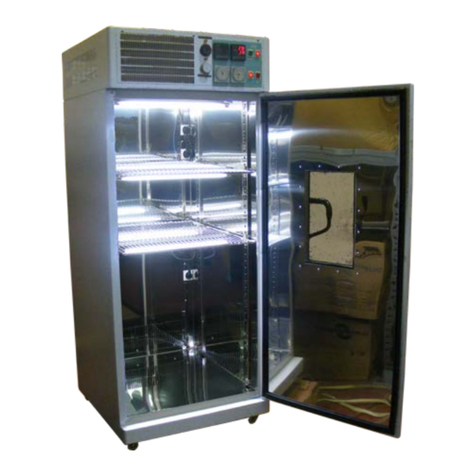
(Pt)
(2) Press the SET function key for 1 second to enter the first menu, the upper row displays ,
which is the required set temperature, and then press the SET function key, the upper row displays
,which is the required time setting, and then press the SET function key to save.
(3) Press the SET function key for 5 seconds to enter the setting parameters required by the second
menu (according to Table 1), and then press the SET function key for 5 seconds to save the setting
value.
4.1 Self-tuning function of the meter
Press for 5 seconds, appear set symbol ,and self-adjusting begins; when self-
adjusting ends, off, then get a group of PID parameters overcoming excessive temperature.
During self-adjusting, press for 5 seconds and off, then self-adjusting ends. The meter
will be controlled following the original PID parameters.
If the temperature rise is slow, use a parameter that is several tens of degrees higher than the
self-tuning parameter to control the required time speed.
4.2 Time function:
Press key and then the total power up time shows in minutes. In case of power failure, the
previous timer is invalid. When the caller calls, start the timer from zero again.
4.3.Time setting up function:
According to the first menu in Table 1, the upper row of the meter displays , and the lower row
sets the time.
When the time needed by the meter is up, lower row shows off and output function ends. If you
want to resume control time setting up, you should select power off first, then restart. Long-term
heat preservation is required, and the time is set to "0"
4.4 If it displays LLL, it means that the sensor is short-circuited or the temperature is less than -20℃;
if it displays HHH, it means that the sensor is open or the temperature is greater than the
measurement range.
Note: When using the vacuum oven, if the sensor is placed inside the oven, and it is self- adjustment
at 140℃. The reference number is for example: I=392+200=592.P=848.D=637. The period is set
to 40 seconds..
If the sensor is placed outside the box, it will be self-tuning at 160°C. The reference number is for
example: I=350+300=650.P=1060.D=1007. The period is set to 60 seconds.
When using the vacuum oven, after self- adjustment, the PID parameters remain unchanged, and
the period is set to 5-10 seconds.




























